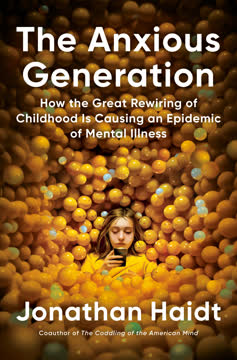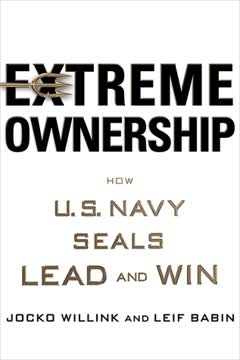가지 주요 요점
1. 잠재의식의 동기를 이해하여 더 나은 결정을 내리기
당신은 일련의 무작위 사건에 대한 논리와 설명을 찾으려고 합니다.
잠재의식의 동기는 우리가 생각하는 것보다 우리의 결정을 더 많이 좌우합니다. 이러한 동기를 이해하면 의사결정 과정을 크게 개선할 수 있습니다. 세 가지 주요 모델이 우리의 잠재적 욕구를 이해하는 데 도움을 줍니다:
-
매슬로우의 욕구 단계 이론
- 생리적 충족
- 안전
- 사랑과 소속감
- 자존감
- 자아실현
-
토니 로빈스의 여섯 가지 기본 인간 욕구
- 확실성
- 불확실성과 다양성
- 중요성과 독특성
- 연결
- 성장
- 기여
-
맥스-니프의 기본 인간 욕구
- 생존
- 보호
- 애정
- 이해
- 참여
- 여가
- 창조
- 정체성
- 자유
어떤 욕구가 우리를 움직이는지 파악함으로써, 우리는 진정한 동기와 가치에 맞는 더 의식적인 결정을 내릴 수 있습니다.
2. 의사결정에서 인지 편향을 인식하고 극복하기
우리는 모든 삶의 영역에서 단순함을 선호하며, 이는 가장 단순해 보이는 결정이나 움직이는 부분이 가장 적은 결정을 거의 항상 선호하게 됩니다.
인지 편향은 잘못된 의사결정을 초래할 수 있는 정신적 지름길입니다. 일반적인 편향에는 다음이 포함됩니다:
- 단순함 선호
- 대비 의존
- 모든 손실 회피
- 위험 감소
- 무의식적 편향
- 확증 편향
- 도박사의 오류
- 장밋빛 회고
이러한 편향을 극복하려면:
- 초기 신념과 가정을 질문하십시오
- 다양한 관점을 찾으십시오
- 여러 각도에서 결정을 분석하십시오
- 결정을 내릴 때 자신의 감정 상태를 인식하십시오
이러한 편향을 인식하고 적극적으로 대처함으로써, 우리는 더 합리적이고 효과적인 결정을 내릴 수 있습니다.
3. 단순한 장단점 목록을 넘어가기
그것은 단순하고 쉽습니다. 그것은 당신이 중요한 것에 기초하여 선택을 분석할 수 있는 방법을 제공합니다.
장단점 목록은 간단한 결정에는 도움이 될 수 있지만, 복잡한 선택에는 종종 부족합니다. 이 방법을 개선하려면:
- 각 요소의 중요성을 수치화하십시오 (0-10 척도)
- 결과의 다른 해석을 고려하십시오:
- 총점이 높은 쪽을 선택하십시오
- 장점이 단점의 두 배일 때만 행동하십시오
- 특정 상황에 맞게 수치화를 조정하십시오:
- 절약된 돈
- 절약된 시간
- 목표 달성
- 감정적 영향
- 고정된 요소와 변경 가능한 요소를 식별하십시오
- 이 과정을 통해 진정으로 중요한 것을 발견하십시오
- 가능한 경우 주요 요소를 독립적으로 해결하십시오
전통적인 장단점 목록에 깊이와 미묘함을 더함으로써, 더 정보에 입각한 맞춤형 결정을 내릴 수 있습니다.
4. 자아의 영향 관리하기
사회적 수용을 위해 행동할 때, 우리는 인정과 들림의 감각을 찾고 있습니다.
자아의 영향은 의사결정에 상당히 크고 종종 해로운 영향을 미칠 수 있습니다. 일반적인 자아 중심 행동에는 다음이 포함됩니다:
- 다른 사람을 비난하기
- 부정
- 합리화
- 사회적 수용 추구
자아의 영향을 관리하려면:
- 자기 인식과 정직을 실천하십시오
- 두려움이나 불안에서 행동하고 있는지 인식하십시오
- 잘못을 성장의 자연스러운 부분으로 받아들이십시오
- 합리화보다는 사실과 증거에 집중하십시오
자아의 영향을 인정하고 완화함으로써, 우리는 자기 보호 본능이 아닌 현실에 기반한 결정을 내릴 수 있습니다.
5. 포괄적인 의사결정 분석을 위한 여섯 모자 방법 사용하기
여섯 모자 방법은 결정을 내리는 동안 모든 기초를 다질 수 있도록 체크리스트를 제공합니다.
에드워드 드 보노의 여섯 모자 방법은 의사결정에 구조화된 접근 방식을 제공합니다:
- 흰 모자 (셜록 홈즈): 정보 수집 및 분석에 집중
- 빨간 모자 (프로이트): 감정과 직관 탐구
- 검은 모자 (이요르): 잠재적 문제와 위험 식별
- 노란 모자 (치어리더): 이점과 기회 고려
- 녹색 모자 (파블로 피카소): 창의적 해결책과 대안 생성
- 파란 모자 (헨리 포드): 의사결정 과정 관리 및 관점 통합
이러한 다양한 각도에서 결정을 체계적으로 검토함으로써, 더 철저하고 균형 잡힌 분석을 보장할 수 있습니다.
6. 분석 마비와 우유부단 극복하기
분석 마비는 단순히 멋진, 운율이 맞는 용어가 아닙니다. 그것은 당신의 삶에서 소중한 모든 것, 개인적인 것부터 직업적인 것까지 방해할 수 있는 실제 문제입니다.
분석 마비를 극복하려면:
- 대부분의 결정은 되돌릴 수 있음을 인식하십시오
- 엄격한 필터와 경계를 적용하십시오
- 완벽보다는 "충분히 좋은" 것을 목표로 하십시오
- 의도적으로 판단적인 사고를 하십시오
- 기본 행동과 시간 제한을 설정하십시오
- 80/20 파레토 원칙을 사용하십시오: 가치의 80%는 노력의 20%에서 나옵니다
- 완벽을 추구하면 종종 수익이 감소한다는 것을 기억하십시오
- 작은 문제에 대해 더 빠른 결정을 내리는 연습을 하여 자신감을 키우십시오
이러한 전략을 구현함으로써, 우유부단을 극복하고 품질을 희생하지 않고 더 신속한 결정을 내릴 수 있습니다.
7. 효과적인 그룹 의사결정 탐색하기
그룹 결정은 섬세하고 비효율적인 과정일 수 있지만, 허용한다면 가장 큰 맹점을 밝힐 수 있습니다.
그룹 의사결정은 장점과 도전 과제를 모두 가지고 있습니다. 그 효과를 극대화하려면:
-
적절한 접근 방식을 선택하십시오:
- 독재적
- 자문적
- 투표
- 합의
-
다음과 같은 기법을 사용하십시오:
- 순위 투표
- 사람당 여러 표
- 명목 그룹 기법
- 다양한 관점을 장려하여 집단사고를 해결하십시오
- 열린 의사소통을 위한 안전한 공간을 만드십시오
- "방해 금지" 또는 "나쁜 아이디어 없음"과 같은 정책을 구현하십시오
그룹 의사결정의 강점을 활용하면서 약점을 완화함으로써, 더 균형 잡히고 통찰력 있는 결과를 얻을 수 있습니다.
8. 더 나은 의사결정을 위해 감정을 활용하기
미각을 완전히 억제하면 맛을 느낄 수 없습니다. 그 시점에서 음식 선호를 무엇이 이끌까요?
감정이 때때로 잘못된 선택을 초래할 수 있지만, 의사결정에 필수적이기도 합니다. 연구에 따르면 감정 처리가 손상된 사람들은 간단한 결정조차 내리기 어려워합니다.
감정은 다음과 같은 방식으로 의사결정에 기여합니다:
- 과거 경험에 기반한 빠른 반응 제공
- 논리가 놓칠 수 있는 직관적 통찰 제공
- 선택에 대한 행동과 헌신을 유도
감정을 효과적으로 활용하려면:
- 자신의 감정을 인식하고 인정하십시오
- 감정이 관점을 어떻게 영향을 미칠 수 있는지 파악하십시오
- 감정적 입력과 논리적 분석의 균형을 맞추십시오
- 외부 감정적 영향 (예: 치알디니의 여섯 가지 영향력 무기)을 인식하십시오
감성 지능과 합리적 사고를 통합함으로써, 더 전체적이고 만족스러운 결정을 내릴 수 있습니다.
9. 최적의 선택을 위한 WRAP 방법 적용하기
WRAP은 당신이 그 지름길을 넘어서서 말하자면, 네 가지 철저한 단계로 작업을 하도록 만듭니다.
칩과 댄 히스가 개발한 WRAP 방법은 포괄적인 의사결정 프레임워크를 제공합니다:
W - 선택의 폭을 넓히기
- 명백한 선택을 넘어서 보십시오
- 여러 대안을 고려하십시오
- 다양한 선택 요소를 결합하십시오
R - 가정을 현실로 테스트하기
- 다양한 관점을 찾으십시오
- 소규모 실험에서 아이디어를 테스트하십시오
- 잠재적 장애물과 극복 방법을 고려하십시오
A - 거리 두기
- 즉각적인 감정에서 벗어나십시오
- 장기적인 결과를 고려하십시오
- 친구에게 조언할 것을 물어보십시오
P - 잘못될 준비하기
- 긍정적 및 부정적 결과를 예상하십시오
- 비상 계획을 세우십시오
- 재평가 신호를 설정하십시오
이 방법을 따름으로써, 다양한 요소와 잠재적 결과를 고려한 더 철저하고 신중한 결정을 내릴 수 있습니다.
마지막 업데이트 날짜:
FAQ
What is "The Science of Intelligent Decision Making" by Peter Hollins about?
- Comprehensive guide to decisions: The book explores the science and psychology behind how we make decisions, aiming to help readers think more clearly, save time, and maximize happiness.
- Focus on practical methods: Peter Hollins provides actionable frameworks, mental models, and checklists to improve decision-making in personal and professional life.
- Addresses common pitfalls: It delves into why people struggle with indecision, cognitive biases, and emotional influences that lead to sub-optimal choices.
- Goal of the book: The ultimate aim is to help readers destroy indecision and become more confident, effective decision-makers.
Why should I read "The Science of Intelligent Decision Making" by Peter Hollins?
- Understand your own mind: The book helps you uncover subconscious motivations and cognitive traps that affect your choices.
- Practical improvement: It offers step-by-step methods and mental checklists to make better, faster, and more satisfying decisions.
- Applicable to all areas: Whether for career, relationships, or daily life, the advice is relevant and actionable.
- Boosts confidence and happiness: By learning to avoid indecision and poor choices, you can save time, reduce stress, and increase your overall well-being.
What are the key takeaways from "The Science of Intelligent Decision Making"?
- Subconscious drives matter: Most decisions are influenced by subconscious needs and desires, which can be understood through models like Maslow’s Hierarchy of Needs.
- Decision fatigue is real: Your ability to make good decisions decreases with stress, fatigue, and too many trivial choices.
- Cognitive biases are traps: Recognizing and counteracting biases like loss aversion, confirmation bias, and the zero-risk bias is crucial.
- Structured methods help: Using frameworks like the Six Hats Method, WRAP, and quantified pros and cons lists leads to better outcomes.
How does Peter Hollins define and address indecision in "The Science of Intelligent Decision Making"?
- Indecision as analysis paralysis: Hollins describes indecision as being stuck due to fear of making the wrong choice or seeking perfection.
- Root causes: It often stems from lack of confidence, fear of judgment, and overwhelming options.
- Actionable solutions: The book suggests setting boundaries, using default choices, and aiming for “good enough” rather than perfect.
- Reversibility of decisions: Hollins emphasizes that most decisions are reversible, so taking action is usually better than endless deliberation.
What are the main decision-making models and frameworks discussed in "The Science of Intelligent Decision Making"?
- Maslow’s Hierarchy of Needs: Explains how unmet needs at different levels drive our decisions.
- Tony Robbins’ Six Human Needs: Outlines certainty, variety, significance, connection, growth, and contribution as key motivators.
- Max-Neef’s Fundamental Human Needs: Adds nuance with nine needs, including subsistence, protection, affection, and freedom.
- Six Hats Method: Encourages viewing decisions from six perspectives—logical, emotional, pessimistic, optimistic, creative, and organizational.
- WRAP Method: Stands for Widen your options, Reality-test assumptions, Attain distance, and Prepare to be wrong.
How does "The Science of Intelligent Decision Making" by Peter Hollins explain cognitive biases and decision traps?
- Definition of cognitive biases: These are mental shortcuts or errors in thinking that lead to flawed decisions.
- Common biases covered: The book details simplicity preference, contrast effect, loss aversion, zero-risk bias, unconscious bias, confirmation bias, gambler’s fallacy, and rosy retrospection.
- Impact on choices: These biases can cause you to ignore relevant information, overvalue certain options, or make irrational decisions.
- Strategies to counteract: Hollins recommends self-awareness, questioning assumptions, and using structured frameworks to minimize bias.
What is the Six Hats Method in "The Science of Intelligent Decision Making" and how can it improve decisions?
- Six perspectives: The method involves “wearing” six different hats—white (facts), red (emotions), black (pessimism), yellow (optimism), green (creativity), and blue (organization).
- Holistic analysis: By systematically considering each perspective, you ensure all angles are covered and avoid tunnel vision.
- Practical application: Assigning hats to group members or yourself helps structure discussions and decision processes.
- Reduces blind spots: This method helps uncover hidden factors and balances emotional and logical considerations.
How does Peter Hollins recommend using pros and cons lists in "The Science of Intelligent Decision Making"?
- Quantify importance: Assign numerical values (0-10) to each pro and con based on significance, rather than treating all factors equally.
- Compare totals: Make decisions based on which side has a higher total value, or require the pros to outweigh cons by a significant margin before acting.
- Adapt to context: Tailor the criteria (money, time, happiness, etc.) to fit the specific decision at hand.
- Identify alternatives: Sometimes, analyzing the list reveals that addressing a single factor (e.g., comfort) is more effective than making a major change.
What is decision fatigue according to "The Science of Intelligent Decision Making" by Peter Hollins, and how can you avoid it?
- Definition: Decision fatigue is the decline in decision quality after making too many choices, due to limited mental resources.
- Symptoms: Leads to impulsive decisions or procrastination, especially later in the day or after many trivial choices.
- Prevention strategies: Make important decisions early, automate or ignore trivial choices, and take breaks to recharge.
- Role of stress: Stress and anxiety further deplete decision-making capacity, so managing them is essential for good choices.
How does "The Science of Intelligent Decision Making" address the role of emotions and ego in decision-making?
- Emotions are inevitable: The book explains that emotions can’t be separated from decisions and are necessary for motivation and action.
- Ego’s defense mechanisms: Blaming, denial, and rationalization protect self-esteem but can distort reality and lead to poor choices.
- Social acceptance: Fear of judgment and desire for approval often drive sub-optimal decisions.
- Self-awareness is key: Recognizing emotional and ego-driven influences allows for more honest and effective decision-making.
What is the WRAP method in "The Science of Intelligent Decision Making" by Peter Hollins, and how does it work?
- Widen your options: Don’t settle for the first or most obvious choices; generate more alternatives.
- Reality-test your assumptions: Challenge your ideas, seek disconfirming evidence, and stress-test your plans.
- Attain distance: Step back emotionally and give yourself time before finalizing a decision.
- Prepare to be wrong: Plan for failure by having backup options and being ready to adapt if things don’t go as expected.
What are the best quotes from "The Science of Intelligent Decision Making" by Peter Hollins and what do they mean?
- “The real key is to think about what you’re thinking, and pay attention to what you’re paying attention to.”
- Encourages meta-cognition and self-awareness as the foundation of smart decisions.
- “Perfect is the enemy of good enough.”
- Warns against analysis paralysis and the pursuit of unattainable perfection.
- “If you aren’t behind an option with a huge degree of certainty, then it’s as good as a lack of support.”
- Advocates for the “heck yes or no” approach to avoid lukewarm, regretful choices.
- “You can’t remove emotion from the decision-making process because it’s part of your personal logic.”
- Reminds readers that emotions are integral, not obstacles, to making choices.
- “When you have more information about yourself, everything else becomes clearer instantly. Fixate on your priorities; almost everything else is chatter.”
- Stresses the importance of self-understanding and focusing on what truly matters.
리뷰
지능적 의사결정의 과학은 평균 평점 3.91/5로 다양한 평가를 받고 있다. 독자들은 의사결정 개념과 심리적 편향에 대한 간결한 개요를 높이 평가한다. 일부는 이 책을 훌륭한 입문서로 여기지만, 다른 이들은 더 깊이 있는 내용과 실질적인 응용을 원한다. 이 책은 접근성이 좋고 의사결정 능력을 향상시킬 잠재력이 있다는 점에서 칭찬받고 있다. 그러나 비판으로는 책의 짧은 분량, 포괄적인 프레임워크의 부족, 그리고 가끔 발생하는 형식 문제 등이 있다. 전반적으로, 이 책은 의사결정 심리에 대한 귀중한 통찰을 제공하는 빠르고 유익한 읽을거리로 여겨진다.
Similar Books
























